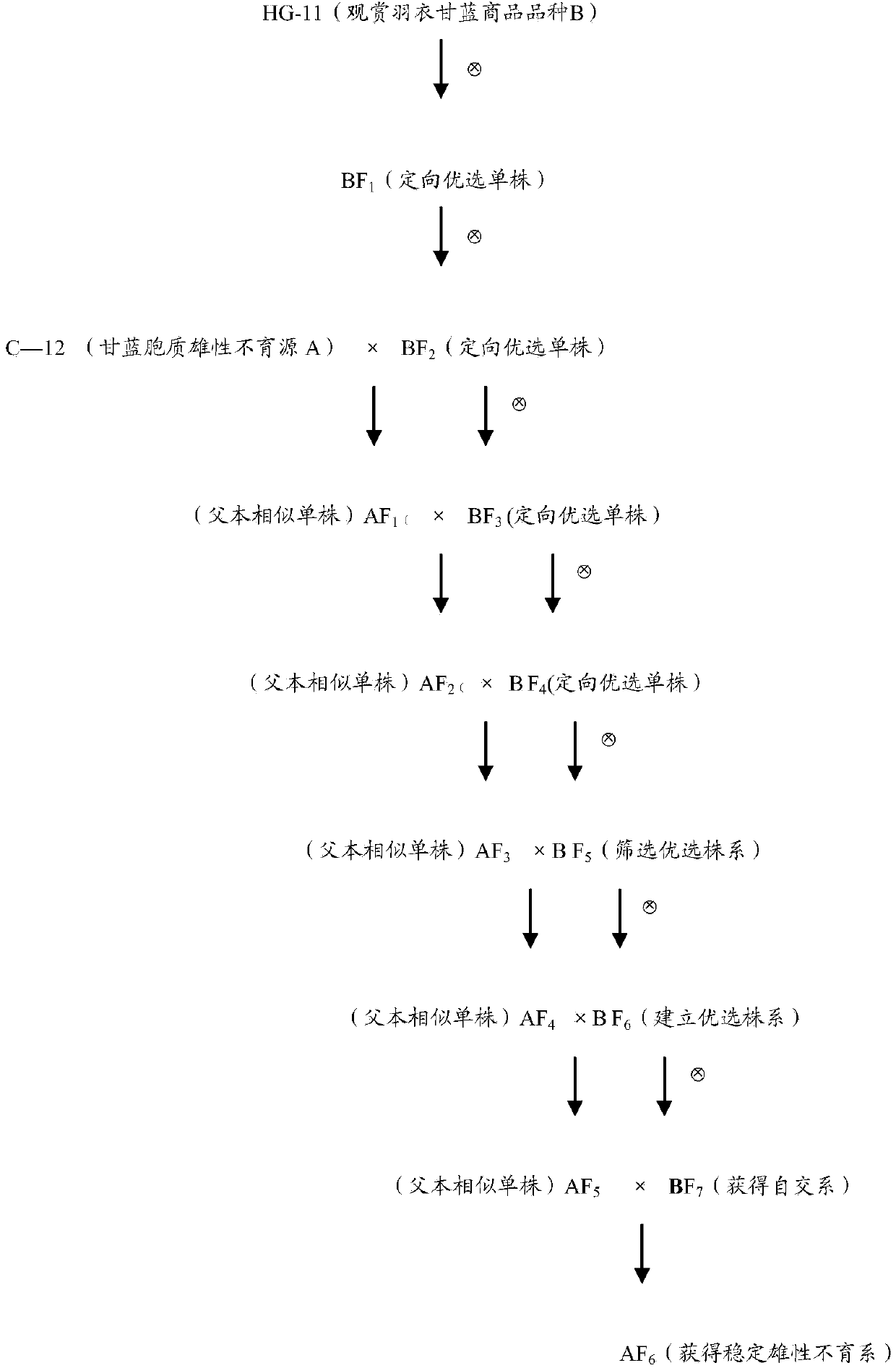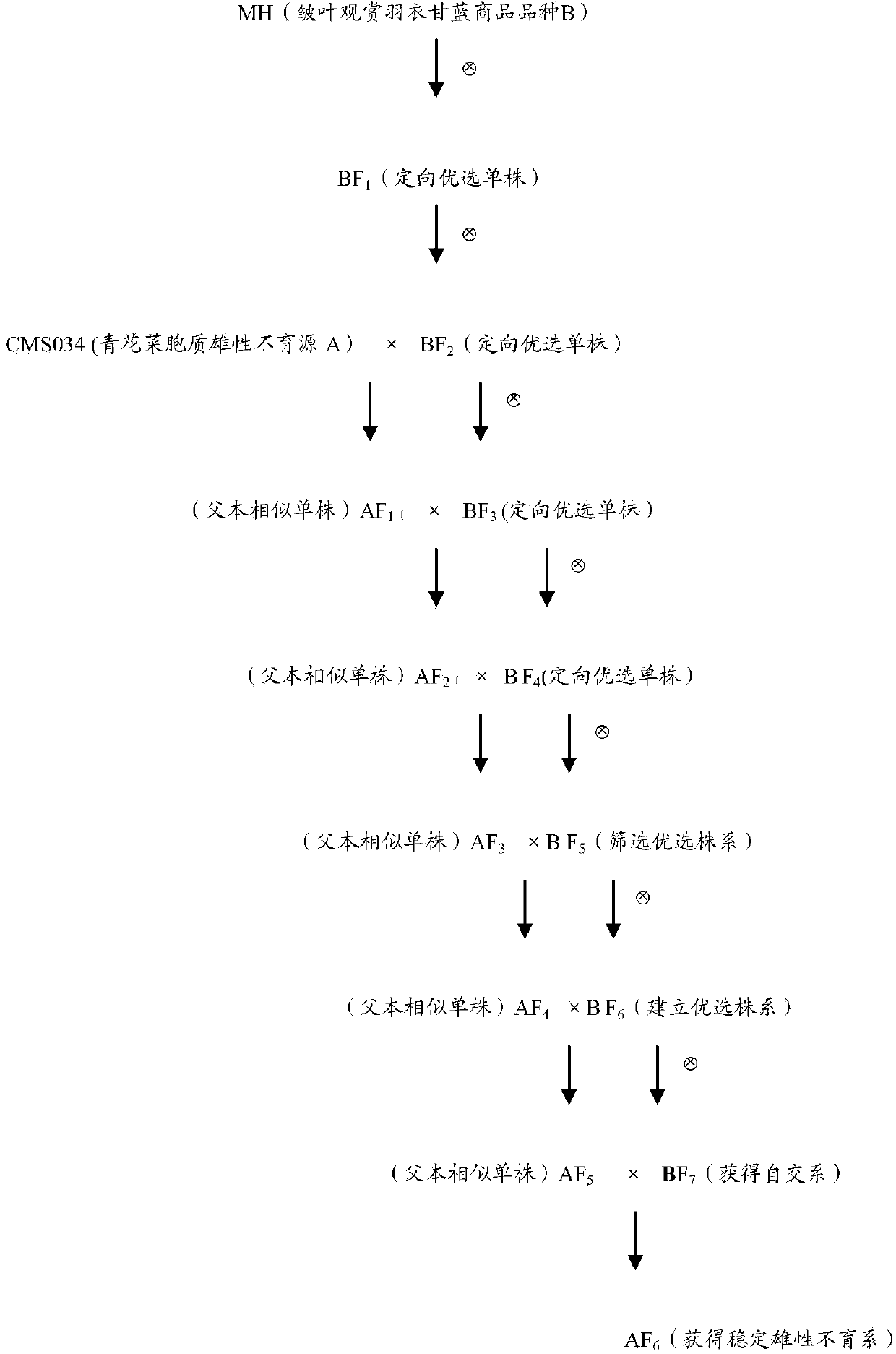Method for breeding male sterile line and maintainer line of kale
A male sterile line, kale technology, applied in the directions of botanical equipment and methods, application, plant genetic improvement, etc., can solve the problems of long time, labor and time, lack of feasibility, etc., achieve good results, and speed up the transformation. process, the effect of shortening the breeding time
- Summary
- Abstract
- Description
- Claims
- Application Information
AI Technical Summary
Problems solved by technology
Method used
Image
Examples
Embodiment 1
[0028] Selected commodity ornamental kale variety HG-11 (HG-11 is purchased from Japan Takii (Takii) Seedling Co., Ltd. 1 つぐみ, (つぐみ translated into Chinese is "spotted thrush"), HG-11 is the code in the breeding process), round leaves, green outer leaves, pink heart leaves; selection of cabbage cytoplasmic male sterile material C-12 ( C-12, also known as Zhonggan No. 22, produced by Vegetable and Flower Research Institute of Chinese Academy of Agricultural Sciences) as a sterile source, see figure 2 Be explained.
[0029] 1. Ornamental kale variety HG-11 (F 1 つぐみ), observe the offspring BF after selfing the first generation 1 Separation and change of traits. Select horizontal plant type, round leaves, green outer leaves, red heart leaves, good ornamental value, cold resistance, late bolting, strong disease resistance, large pollen amount, and good compatibility as the breeding targets. Select individual plants, BF 1 Orientation is preferred for single plants to carry out ...
Embodiment 2
[0040] Select commercial ornamental kale variety MH (MH is also known as "Osaka White" from Japan, purchased from Zhejiang Hongyue Flower Co., Ltd.) with wavy leaves, dark green outer leaves and white heart leaves, and broccoli cytoplasmic male sterile material CMS034 ( Source: Broccoli "Excellent", produced by Japan SAKATA (Sakata) Company) as a source of sterility. see image 3 Be explained.
[0041] 1. Ornamental kale variety MH, after selfing the first generation, observe the offspring BF 1 Separation and change of traits. Select horizontal plant type, wrinkled leaves, green outer leaves, white heart leaves, good ornamental, cold resistance, strong disease resistance, large pollen amount, and good compatibility as the breeding targets. Directional selection Strains, BF1 orientation preferred single plant for the second generation of selfing.
[0042] 2. In the self-bred offspring group BF 2 After selection and confirmation, the individual plants continue to self-fertil...
PUM
 Login to View More
Login to View More Abstract
Description
Claims
Application Information
 Login to View More
Login to View More - R&D
- Intellectual Property
- Life Sciences
- Materials
- Tech Scout
- Unparalleled Data Quality
- Higher Quality Content
- 60% Fewer Hallucinations
Browse by: Latest US Patents, China's latest patents, Technical Efficacy Thesaurus, Application Domain, Technology Topic, Popular Technical Reports.
© 2025 PatSnap. All rights reserved.Legal|Privacy policy|Modern Slavery Act Transparency Statement|Sitemap|About US| Contact US: help@patsnap.com



